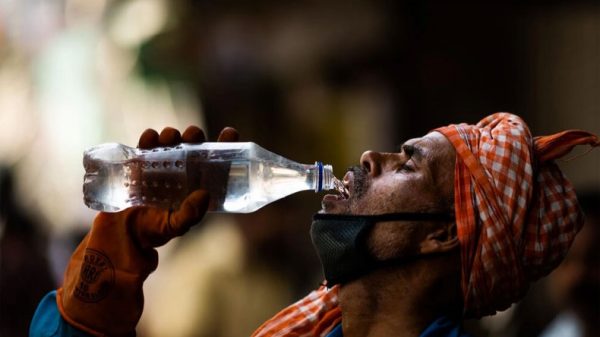No chance of rain soon

Shawdesh desk:
A mild-to-moderate heat spell swept across five of the eight divisions of Bangladesh on Sunday as the day temperature reached 39C in the south-western district of Chuadanga.
Weather forecasters warn that the temperature will keep climbing for there is no chance of rain anytime soon.
April is the hottest month, and high humidity made the day temperature unbearable, especially for the Muslims fasting for 14 hours between morning and afternoon.
A moderate heat wave occurs when the day temperature stays at between 38C and 40C.
The range of temperature between 36C and 38C is defined as a mild heat wave.
A mild-to-moderate heat wave swept over Dhaka, Khulna, Chattogram, Barishal and Rajshahi divisions.
The district of Moulvibazar was also swept by a mild heat wave, according to the Bangladesh Meteorological Department.
In Dhaka, the day temperature slightly rose to 37.7C, compared with that on Saturday.
The fasting Muslims in Dhaka, especially those who needed to go outdoors, suffered intensely as they got baked under the scorching sun for hours being stuck in a nagging traffic jam.
The April days could often get as hot as 40C, a temperature likely to be recorded more than once in the coming days.
Generally, staying hydrated is the technique to tackle high temperature.
Those fasting in the holy month of Ramadan should avoid going outdoors, or carry umbrellas in case of their unavoidable travel.
People working outdoors should take frequent breaks to rest under shade.
Heat stroke could be deadly during hot summer days. Heat stroke refers to a condition in which body fails to control its temperature which rapidly rises.
Heat also reduces people’s access to safe water, leading to outbreak of water-borne diseases such as diarrhoea.
With heat, the demand for power also increases and power outage is likely to increase over the next few days.
On Sunday, according to the Power Grid Company of Bangladesh, the power demand rose to 13,375MW, about a 1,000MW higher than the previous day, resulting in shortage of 74MW.
The country’s highest ever day temperature of 45.1C was recorded in Rajshahi on May 18, 1972.
New Age correspondent in Rajshahi reported that the season’s highest temperature of 38.1C was recorded on Sunday in Rajshahi.
Due to intense heat waves, the irrigation cost of farmers for boro cultivation has increased while mango-litchi pods are drying up.
Mango and litchi buds are falling in almost all areas due to lack of rain water, farmers complained.
Mozdar Hossain, deputy director, Department of Agricultural Extension, Rajshahi, said that the buds had already turned into a mid-mango pulp in almost every mango tree.
‘If such a drought continues, mango pulp may fall,’ he said, urging the growers to take special care for their trees.























Leave a Reply